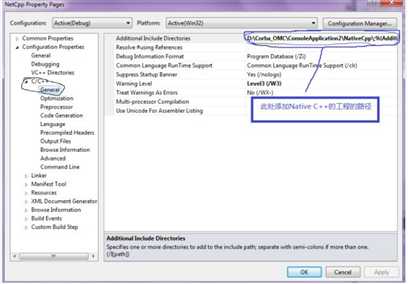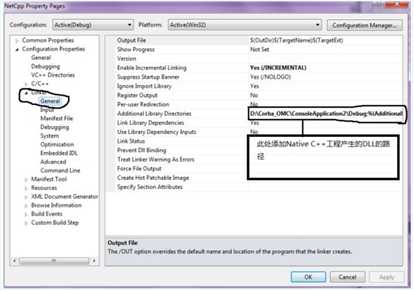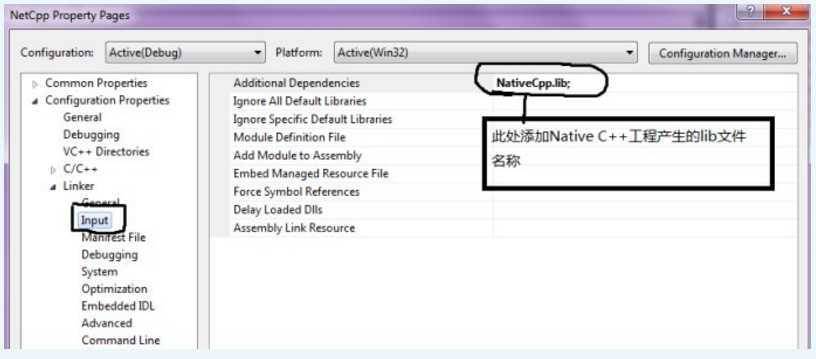标签:exe lin new 分享 port htm export collect size
C#使用CLR/C++的DLL间接调用Native C++的DLL
开发环境:win 7 VS2010
简介:C#的exe使用CLR/C++间接调用Native C++的DLL.
第一步:创建一个C#的Console Application工程-->命名“ConsoleApplication1”。
第二步:创建一个CLR/C++的工程,右击“ConsoleApplication1”上面的“Solution ‘ConsoleApplication1‘”-->Add-->NewProject-->CLR-->Class Library -->命名“NetCpp”。
第三步:创建一个Native C++工程,同上,右击-->Add --> NewProject -->Win32 -->Win32 Project
-->命名“NativeCpp”-->Next-->选择"DLL"-->Export symbols.
以上创建三个工程,下面开始编写代码与设置环境:
第四步:打开"NativeCpp.h"在其中加入一些成员函数与变量;
#define NATIVECPP_API __declspec(dllexport)
// This class is exported from the NativeCpp.dll
class NATIVECPP_API CNativeCpp {
public:
CNativeCpp(void);
// TODO: add your methods here.
int getA()
{
return 20;
}
};
第五步:在NetCpp工程中引用NativeCpp的DLL;
右击NetCpp工程-->Properties



第六步:打开CLR/C++工程的"NetCpp.h",加入#include "NativeCpp.h"
#include "NativeCpp.h"
using namespace System;
namespace NetCpp {
public ref class Class1
{public:
int getB()
{
CNativeCpp a;
return a.getA();
}
};
}
第七步:右击ConsoleApplication1工程的References-->Add Reference-->Projects-->选择"NetCpp"
再把Native C++产生的DLL复制到C#工程的bin\\Debug\\目录下.(若想在修改了NativeC++代码后动态的更新Native C++的DLL,需要在C#工程的属性中设置:PropertiesàBuild EventsàPost-build event command line:写入命令:copy $(SolutionDir)Debug\NativeCpp.dll $(TargetDir) )
第八步:打开ConsoleApplication1工程program.cs。
using System;
using System.Collections.Generic;
using System.Linq;
using System.Text;
namespace ConsoleApplication1
{
class Program
{
static void Main(string[] args)
{
NetCpp.Class1 cl = new NetCpp.Class1();
Console.WriteLine("getA()" + c1.getB().ToString());
Console.Read();
}
}
}
原文地址:http://blog.sina.com.cn/s/blog_a50d2d7401018rxr.html
C#使用CLR/C++的DLL间接调用Native C++的DLL
标签:exe lin new 分享 port htm export collect size
原文地址:http://www.cnblogs.com/heyunxu/p/6480815.html